How do you know that second-hand bar you found on Facebook Marketplace, OfferUp or Craigslist is a good deal?
Why shouldn’t you just get that new $95 bar from eBay and call it good?
I’ve been in the gym equipment industry for over a decade. I’ve seen a lot of bars. It’s pretty easy to spot the junk ones.
Here’s what you’re in for when you get a cheapo bar.
Table of Contents
Knurling Stopping Too Short of the Shoulders
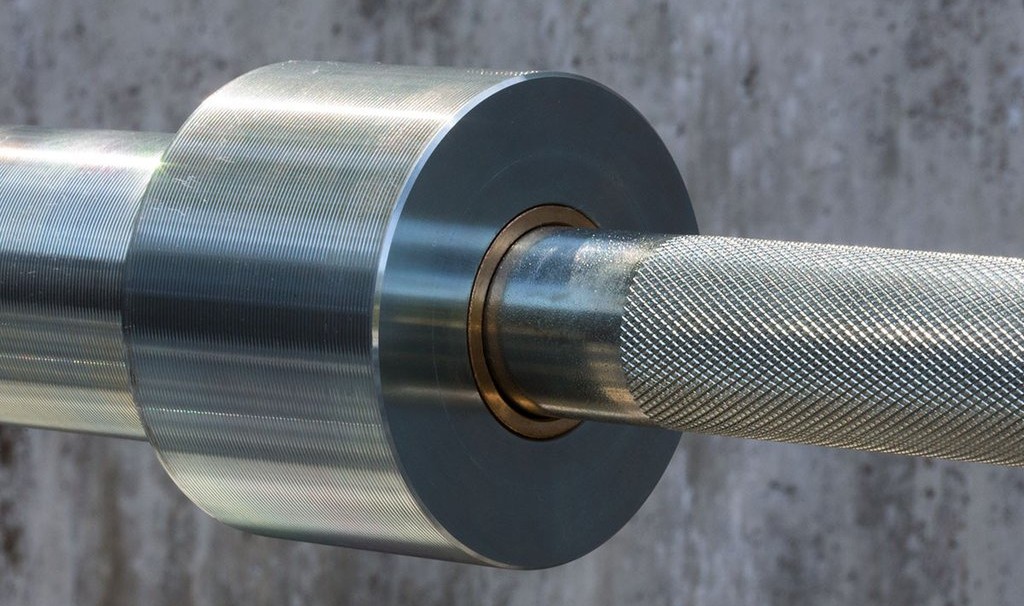
In the bar above, the knurling stops an inch short of the shoulders. It’s not as bad as some. I’ve seen some bars where it stops 2 or 3 inches short.
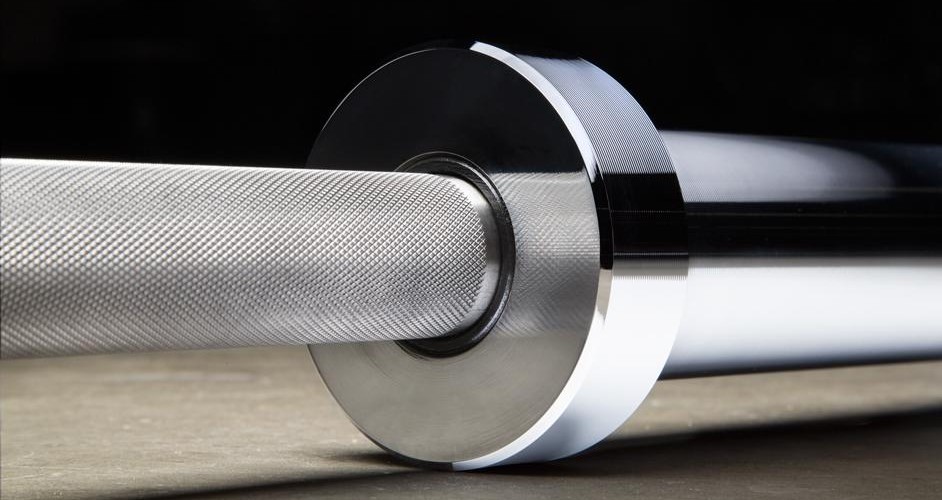
Visibly, the first giveaway for a high quality bar is when the knurling goes all the way to the end of the shaft, as shown above.
It’s a cost-saving measure. If a manufacturer can skip a couple inches of knurling then they will save time and save about 10% wear on their tools.
However, the first image is otherwise an okay bar, despite the knurling stopping short. Knurling stopping an inch or two short of the shoulders is not necessarily an indication of a cheap bar, but knurling that goes all the way to the shoulders is always an indication of a higher quality bar.
The reason more and more bars have knurling that goes all the way to the ends is to accommodate lifters with a maximum-width snatch grip. That’s just about the only reason anyone would grip that wide. Some people with poor shoulder mobility may take a grip that wide with back squats, although their hands don’t need to grip the bar as tightly during a back squat as a lifter would need to do so with snatches.
This makes the feature more of something to notice for most lifters who won’t get any difference out of it, not a dealbreaker.
Knurling That’s Hardly There At All
Some bars have extremely “passive” knurling that you can run your hand along too comfortably. If it’s not grabbing your hand, it’s not doing its job. This can be partly due to a coating that’s too thick, as described in a section further below.
On the other end of the spectrum, if you run across a bar with knurling that’s quite deep and it hurts to grip it, you’ve found a rare power bar that has knurling pressed ultra-deep. That’s no accident, and it isn’t cheap to do. It primarily helps lifters with deadlifts. This kind of knurling was made popular by the Texas Power Bar. You see several more modern bars like that today that are overall better bars, such as the Rogue Ohio Power Bar. These kind of aggressively knurled bars are not for everyone for all purposes.
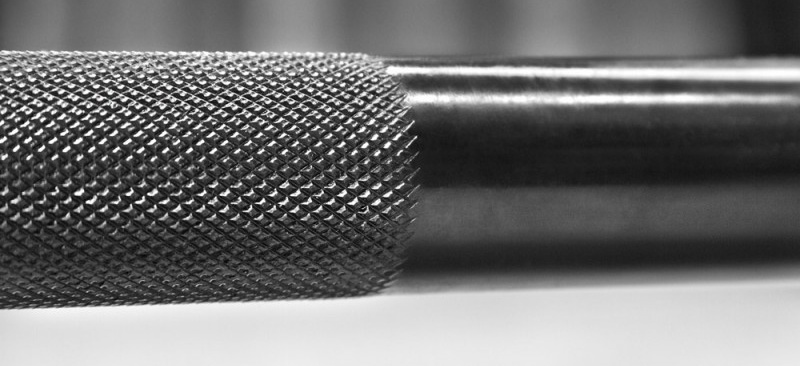
The Right Weight
People frequently find that a cheap bar weighs only 39-43 lbs. This is not uncommon. A 7ft bar is supposed to be either 44 lbs (20kg) or 45 lbs.
Not all cheapo bars are underweight, but the cheapest of the cheap ones are.
It Could Actually Fall Apart
Youtuber Tibbman shows you what happens with a lousy bushing on a bar. In this case the cheap bushing got deformed from heavy deadlifts and was able to slip out of its hole, causing the whole sleeve to slide.
The bolt holding the sleeve on did not fail. That can happen too (see below), but in this case it was a bushing.
As the bushing came out, the sleeve began to slide, ruining his center of balance, causing the bar to tip to one side as he tried to lift. On a heavy set, this is how you pull a muscle.
Tibbman luckily was ok, and he chose to repair the bar by getting more bushings of the right size (I have no idea what size) from the hardware store.
Do you want to learn barbell repair, or do you want to lift? My guess is you don’t want to spend time doing trips to the hardware store and breaking out a set of tools to to fix a bar that shouldn’t have failed like it did.
That Annoying Bolt
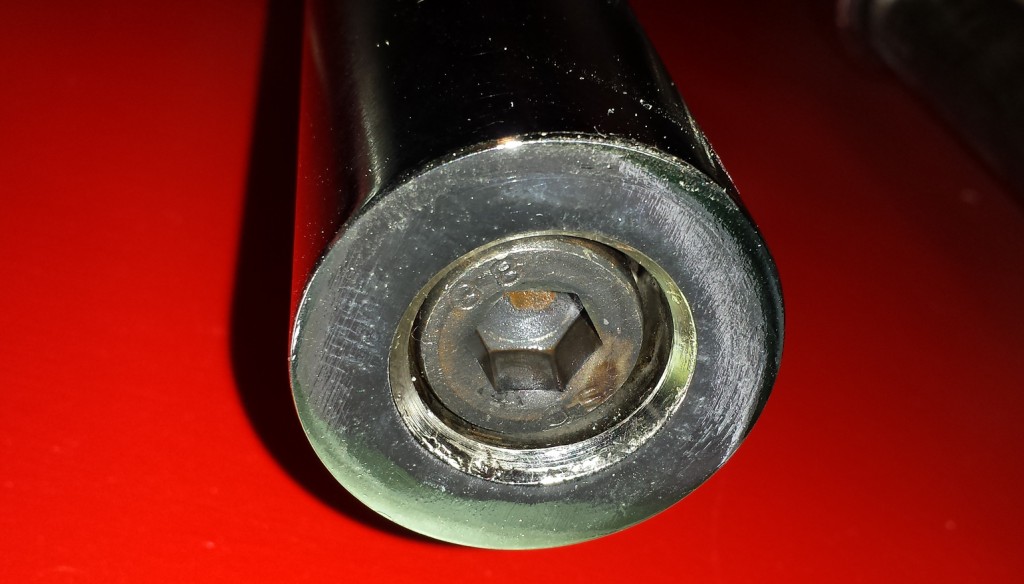
The bolt shown above loosening is super common. It’s just screwed in, usually without Loctite or anything, and it unscrews from use.
Here’s what the bolt looks like by itself. Amazon has replacement bolts if you need them. This is an M12 sized bolt (12mm).
The bolt could slide all the way off if the bolt has completely unthreaded, sending the plates of that side to the floor, then flying up into the air as it’s unloaded.
Using Loctite is better than nothing (I recommend Loctite Blue, which holds well but leaves the bolt still removable with enough force or after it’s softened with a heat gun). That isn’t really the point, though. The fact that it loosens is a symptom of a larger problem, that being it’s a bad method of construction that saves a few bucks and causes issues.
The bolt can also bend. The bolt breaking in half is rare, due to the way steel will normally bend first, leaving you to notice that the sleeve won’t spin anymore before you manage to actually break the bolt from continued loads.
The Coating
The whole reason for some kind of coating over the bar is because it corrodes. If we lived on the Moon, I believe we could use bare steel bars all day and we would be ok.

The cheapest way to coat a bar is with cheap chrome plating. Chrome isn’t necessarily cheap. Hard chrome is great, although it can get slippery with sweaty hands. Cheap chrome is too weak and thin, leading to moisture getting through it. An old cheapo bar will have the chrome chipping off because the steel surface underneath is all rusted up.
The bottom line here is: When you see evidence of the chrome starting to chip away, particularly on corners, like the shoulders of the sleeves, it’s going to get worse.
Other than hard chrome, there are several other coatings that work just fine. Cerakote is a popular one today, a ceramic coating that is really durable and feels nice and grippy.
Do the Sleeves Spin?
Brand new, maybe those cheapo bar sleeves will spin ok. Over time, one sleeve very likely will lock up from the bushings or bolt inside getting warped.
High quality bars can suffer some loss of spin over time, but only a small amount, and they should never lock up. Applying some oil to the shaft that drips down into the sleeves can help tremendously, if it’s an older bar. Some newer bars use grease instead of oil, and you shouldn’t mix the two.
For ultimate spin, bearings in the sleeves instead of bushings, or a combination of bearings and bushings, gives you hyper-sensitive spin. This is only desirable for experienced lifters doing olympic lifts who have excellent form and are suffering some wrist tweaking from the shaft not spinning easily enough in their hands during the transition to the catch. You can tell it’s a bearing bar when the sleeves spin for more than a couple seconds.
Do not load plates on a bar that’s sitting on a rack, and spin the plates to test spin. So many Youtubers do this. In a way it makes sense, because you’re testing the sleeve spin under load. But the plates adds centrifugal force or something to make it spin for like half a minute. It’s silly.
In use, the sleeves don’t actually spin much. The shaft spins in your hands, which you want to some degree for certain movements, most substantially for the clean-and-jerk or snatch.
Therefore, a better way to test the spin is to set the bar on the floor, or prop the sleeves up on something, and spin the shaft with your hand. That’s what you really care about.
A Bent Bar
As suggested above to check spin, you can also test for bar straightness. With the sleeves resting on something at a convenient height, spin the shaft, and you’ll be able to see any significant wobble. Or leave it on the floor and spin it with your foot.
A high quality bar should not have a bend in it brand new. Their quality control should be better than that.
Possibilities include:
- It’s a crappy bar, and they didn’t care if it was bent or not before they packaged it up
- It’s a high quality bar that should have been replaced right away by the manufacturer
- It bent during use, likely from being dropped hard on a rack with a lot of weight.
The last possibility, bending from abuse, can happen to any bar. It all depends at what weight/force. Obviously it’s harder to bend a stronger bar.
Anyway, if you’ve encountered a bent bar, you’re best off not using it. It will want to rotate in your hands, or on your shoulders during a squat, if the high part of the bend isn’t facing up. That’s a bit of a safety issue.
Correct Dimensions
Guess what happens when those sleeves that hold the weights are machined to a diameter that’s a tad bit off?
The first worst case is when the sleeves are made too large. This used to be more common than it is today. Manufacturers of cheap equipment started making olympic bar sleeves to 2″ diameter. As anyone who works with metal or wood knows, a 2″ rod does not fit into a 2″ sleeve. You won’t be able to get your plates on. The reason they got away with it is they also made plates with a larger than 2″ hole. It was all sloppy estimates, because they chose to give themselves large margins of error to make sure their stuff fit well enough together.
Today, most sleeves are better than that, but you’re going to run into larger than normal sleeves more often with low quality bars.
Does Bar Strength Matter?
But that bar is rated for 600 lbs! Wow, that’s more than you’ll ever lift, right?
If the bar is doing nothing but sitting on the rack, perhaps it will be ok if you gently load it to 600 lbs.
That is not what bars are built for. Once you slam that bar down on a rack after your last rep, it endures a shock load far greater than the weight you loaded on it. That “600lb test” bar could suffer a bent shaft at 200 lbs in that situation.
What’s more, you can’t use it for proper olympic lifting at all, and perhaps not even deadlifting. When the bar is dropped on the floor, it isn’t just the shaft that endures the abuse like when it’s dropped on a rack. The sleeves, and more importantly the bolts and bushings inside them, get hit hard. See the “It could actually fall apart” section above for a real-world example of what happens.
How Much Should You Pay?
At the minimum, be ready to spend at least $200 on a decent one that should hold up great for any beginner lifter.
It goes up from there, to a few hundred bucks to nearly $1,000 for IWF competition-ready bars. Most people don’t need to spend more than $300-350 even for a really good bar.
On the used market, hey, you might stumble on a great deal. People just want to get rid of stuff quick. Usually they don’t even know what they have.
If you are shopping used, hopefully this article helps you spot the obvious cheap ones so you can only spend your time driving to look at the potentially high quality bars before someone else snatches it up.

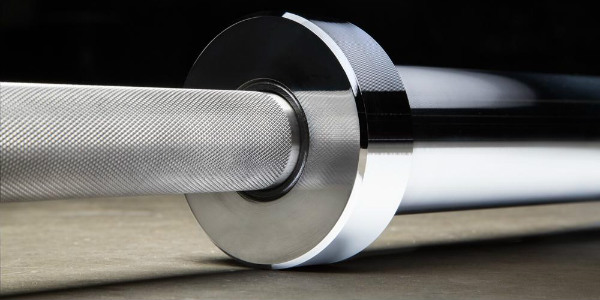
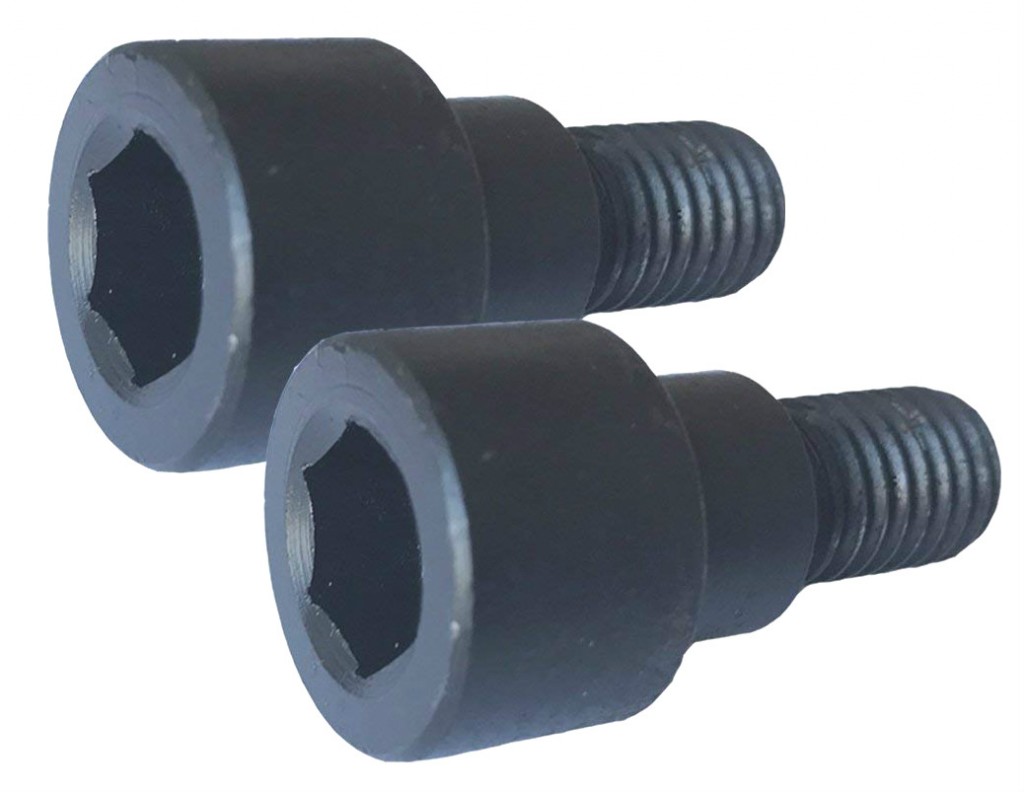
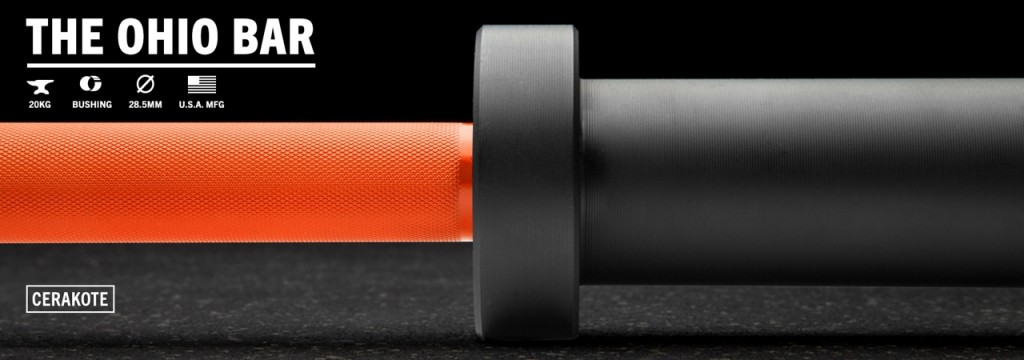
This was very helpful. Thank you!
Good article. I bought a Vulcan Strengh standard bar for around $300. Excellent bright zinc coated bar with sintered bronze bushings with lifetime warranty and designed for used in commercial gyms. I also have a “cheap” academy sport’s bar that I got as a 300 lbs Olympic weight set on clearance for $120. The difference is night and day. I only use it in my landline attachment. I bought the set for the weight plates which are okay for the price.
I’ve heard good things about that Vulcan Standard Bar! Good point on the landmine – Literally any 7ft bar will work fine on a landmine. I’ll have to add a note about that.